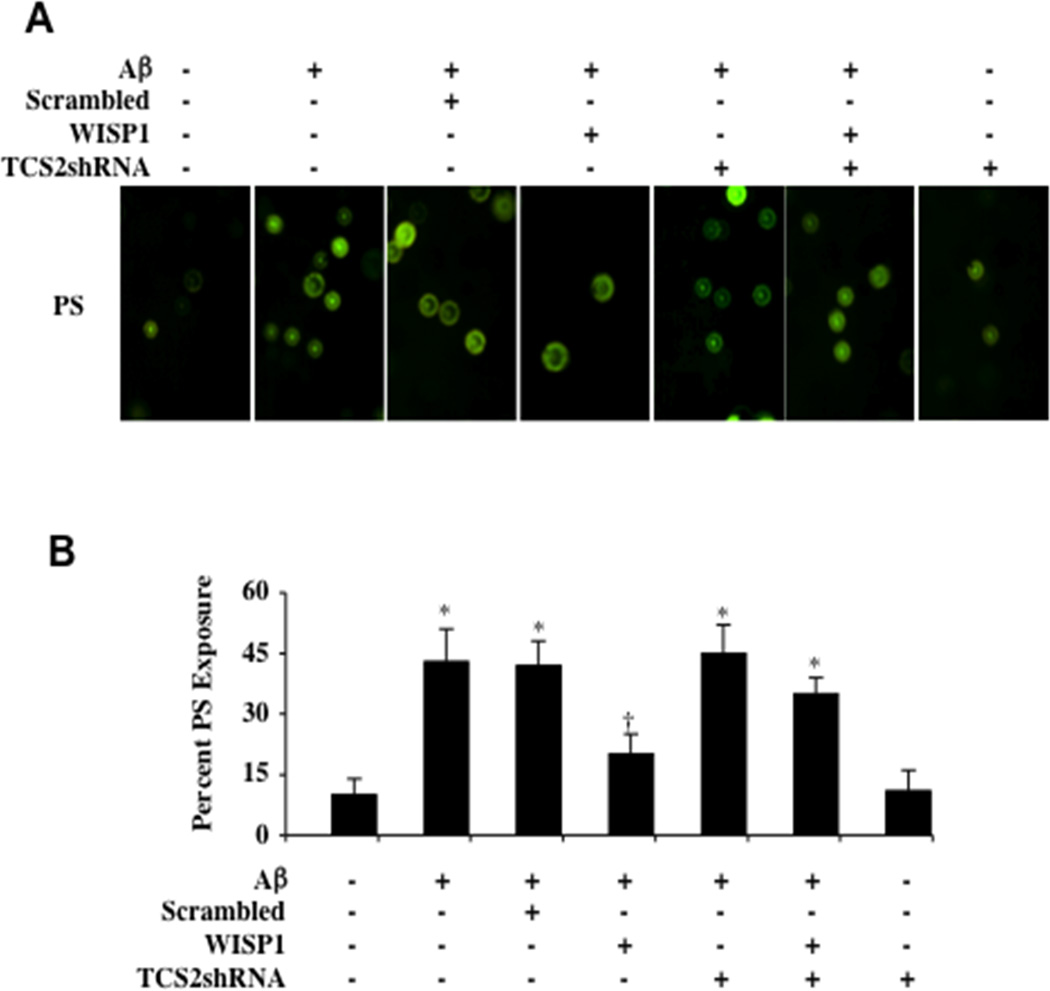Fig. (4). Control of apoptotic phosphatidylserine (PS) membrane exposure by WISP1 is lost with gene silencing of TSC2 during Aβ exposure.
(A) Microglia were exposed to Aβ (10 µM) for 24 hours and membrane PS externalization was assessed by annexin V phycoerythrin (green fluorescence) labeling. In representative images, Aβ significantly increased annexin V phycoerythrin staining. In contrast, WISP1 (10 ng/ml) administered 1 hour prior to Aβ exposure significantly reduces the presence of membrane PS exposure. Transfection with TSC2 shRNA prior to Aβ exposure markedly reduced the capacity of WISP1 to reduce annexin V labeling. Loss of TSC2 in untreated cultures and during Aβ exposure alone did not increase membrane PS exposure. (B) Quantitative results for annexin V phycoerythrin labeling demonstrate that Aβ significantly increases membrane PS exposure, but WISP1 (10 ng/ml) administration 1 hour prior to Aβ exposure almost eliminates microglial membrane PS exposure. Combined transfection of TSC2shRNA construct with WISP1 (10 ng/ml) administration results in a significant loss of WISP1 to decrease membrane PS exposure during Aβ exposure when compared to WISP1 administration alone during Aβ exposure (*P <0.01 vs. untreated control; P <0.01 vs. Aβ). Non-specific scrambled shRNA did not affect membrane PS exposure during Aβ exposure when compared to Aβ exposure alone. Each data point represents the mean and SD from 4 experiments.

